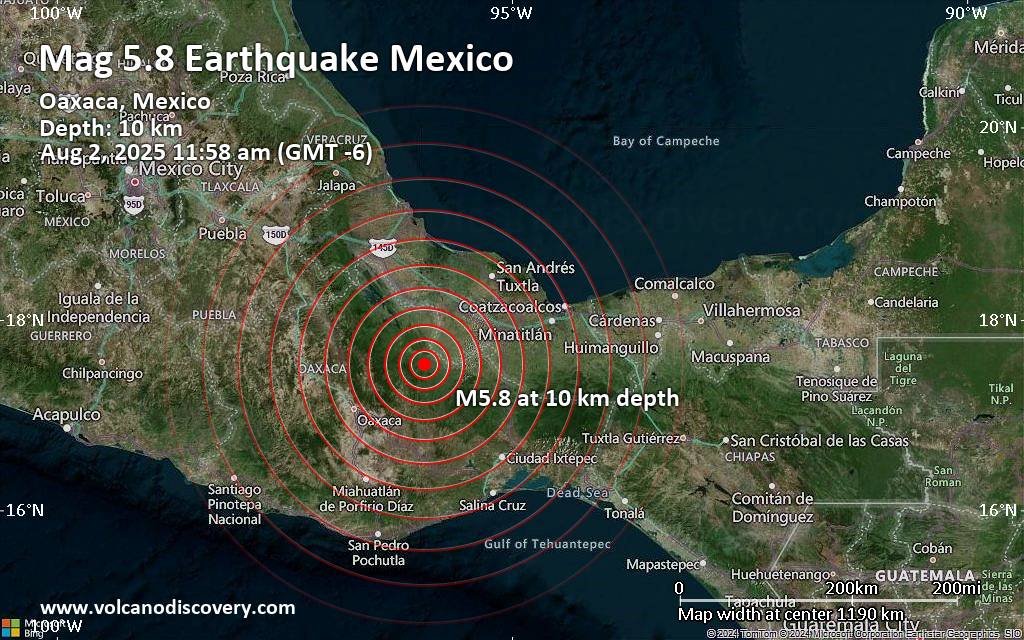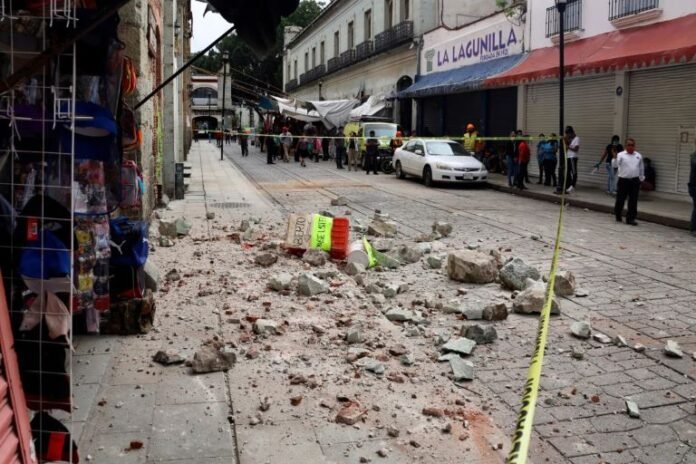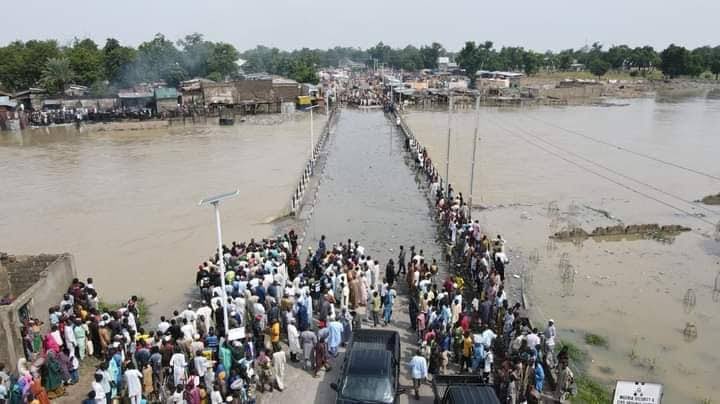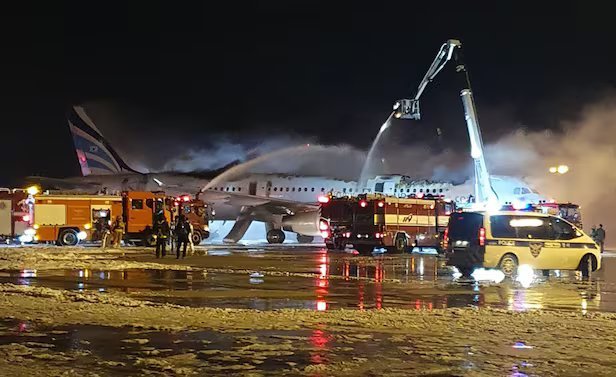A 5.8-magnitude earthquake struck southern Mexico on August 2, 2025, just before noon local time. The epicenter was located about 70 kilometers east-northeast of Oaxaca City, near Santiago Jocotepec, with a depth estimated between 10 and 57 kilometers, depending on reporting agencies.
Despite the strength of the tremor, there were no immediate reports of injuries or structural damage.
According to seismic tracking platforms, nearly 10 million people may have felt the quake, though most experienced only light to moderate shaking.
Cities like San Antonio de la Cal, Santa Cruz Xoxocotlán, and Tuxtepec reported intensity levels of IV on the Modified Mercalli Scale—classified as light shaking.
The German Research Centre for Geosciences (GFZ) was among the first to confirm the event. With no tsunami warnings or major infrastructure disruptions, local authorities have continued to monitor the area for aftershocks.
The National Seismological Service of Mexico and Civil Protection teams have urged residents to remain calm and follow safety protocols.
A Region on Edge
Oaxaca lies in one of the most earthquake-prone zones in Mexico, where the Cocos Plate pushes beneath the North American Plate. This tectonic activity makes southern Mexico highly vulnerable to seismic events.
The region has experienced several major earthquakes in recent years, including the devastating 8.2-magnitude quake in 2017 and a 7.4-magnitude event in 2020.

While quakes like this are not uncommon, their unpredictability remains a challenge for emergency preparedness. Mexico has made strides in early warning systems, such as the SASMEX alert network, but gaps remain in infrastructure resilience and public awareness.
Residents across the region felt the tremor, but most went about their day with little disruption. Emergency services remain on standby, and engineers are inspecting key infrastructure, including schools, hospitals, and bridges, as a precaution.
The quake serves as a reminder of the seismic risks Mexico faces, especially in the south, where urban growth continues in high-risk zones. No alerts have been issued so far, but citizens have been urged to stay informed and prepared.
Authorities recommend checking emergency kits, reviewing evacuation plans, and staying tuned to updates from Civil Protection and the Servicio Sismológico Nacional.
How prepared is the region for stronger quakes in the future? That question continues to hang over one of the most tectonically active areas in the Americas. Do you think Mexico is doing enough to prepare for future earthquakes? Let us know your thoughts below.Rate, Like 👍, Comment💬, share this article, Follow us on our social media handles, and Submit your own story to get featured and earn rewards!






